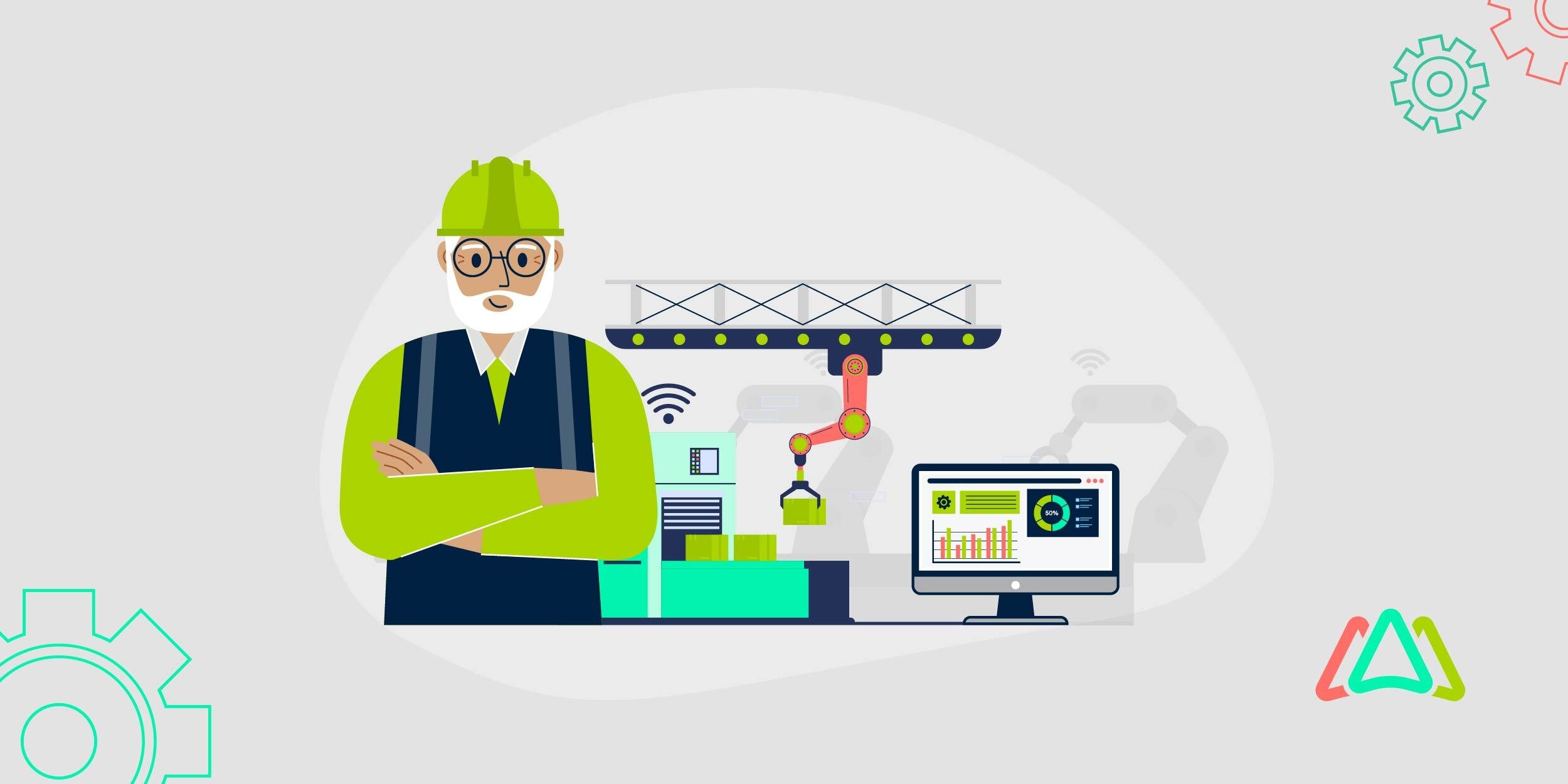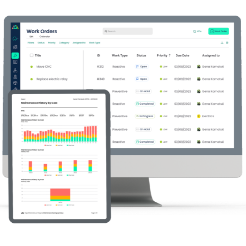
Building a Digital Tribal Knowledge Base in CMMS
What happens when your most experienced maintenance leader is planning on retiring, taking 20 years of equipment expertise with them? This scenario is common in many maintenance and facilities operations, creating a crisis that goes beyond simply finding a replacement.
The workforce is aging, and companies are finding it difficult to find new maintenance professionals to backfill employees who are exiting the workforce. Companies are losing millions of dollars annually because they continue to make the same mistakes and struggle to troubleshoot efficiently. There's nothing more daunting to a company than when a high-value employee leaves and all of their operational knowledge goes with them.
This doesn't always have to be the case. A company can transform this informal expertise into systematic, searchable, and actionable intelligence through its Computerized Maintenance Management System (CMMS). Your CMMS software can capture and share digital tribal knowledge, turning a big vulnerability into a strategic competitive advantage.
What is Tribal Knowledge in Maintenance?
Tribal knowledge can be described as the unwritten, undocumented expertise passed between employees informally over time, mostly subtle knowledge that can have a huge impact on how things are done. With respect to maintenance operations, tribal knowledge includes equipment quirks and workarounds, optimal operating parameters discovered through experience, troubleshooting shortcuts and diagnostic techniques, vendor relationships and parts sourcing knowledge, and safety practices developed over years of hands-on work.

The hidden costs of losing this knowledge are staggering. When experienced staff leave, there may be an increase in downtime due to the loss of critical knowledge and expertise. This can lead to repeated equipment failures, safety risks, inefficient maintenance schedules, and loss of continuous improvement insights. You're starting from scratch every time someone leaves.
Traditional documentation approaches don't work because static documents become outdated quickly. Information gets scattered across multiple systems, there's no context for real-world application, and nothing connects to your actual maintenance workflows.
The Downside of Not Capturing Tribal Knowledge
The consequences of failing to capture tribal knowledge extend far beyond inconvenience. The following is a list of the negative impacts that companies face when tribal knowledge is not documented and captured:
Operational inconsistencies
Without standardized knowledge, different shifts or locations handle the same issues in varying ways, resulting in inconsistent results and quality issues.
Training gaps and extended learning curves
New employees struggle without structured knowledge transfer, taking months longer to reach productivity levels that could be achieved in weeks.
Repeated mistakes and inefficiencies
Without capturing lessons learned, organizations repeatedly make the same expensive mistakes, each time learning from and forgetting the solution.
Safety risks
Undocumented safety practices and hazard awareness can lead to incidents that experienced workers would have prevented.
Limited scalability
As operations grow, the lack of standardized knowledge becomes a bottleneck, making it difficult to maintain consistency across multiple sites or shifts.
How CMMS Enables Digital Tribal Knowledge
CMMS platforms work as comprehensive knowledge capture systems. They enable real-time documentation where work orders capture insights as they happen. You're creating contextual information that's directly linked to your assets and procedures.
However, what makes it powerful is that you're building a searchable repository, providing instant access to historical solutions and expertise. And it's collaborative - multiple team members can contribute and validate knowledge together.
The following is a list of ways a CMMS can digitally document tribal knowledge so companies don’t lose critical know-how when key employees leave the organization:
Detailed work order documentation
CMMS software digitally documents all work order history and records in ways that are easy to search for and report on. These records include photo and video attachments, technician notes and observations, and parts usage and supplier information.
Asset history and profiles
A CMMS maintains complete maintenance records, including performance trends and patterns, known issues and solutions, downtime, costs, materials used, audit trails, maintenance plans and schedules, manuals, as well as manufacturer specifications and modifications.
Preventive maintenance procedures
Standardized maintenance processes with built-in safety protocols, quality checkpoints, and documented resource requirements.
Knowledge base integration
CMMS includes sections linked to equipment maintenance history, troubleshooting guides, best practices documentation, and repositories of lessons learned.
The digital advantage means you'll have mobile access to knowledge in the field, scalable knowledge sharing across multiple locations, data-driven insights from collective experience, and continuous improvement through regular updates.
Practical Examples of Tribal Knowledge
Understanding what tribal knowledge looks like in practice helps you identify what needs to be captured in your CMMS. Here are common examples from maintenance operations:
Machine setup and calibration procedures
Your senior technician is aware that Motor #3 in Building A requires an additional quarter-turn on the tension adjustment to run smoothly, despite the manual not specifying this requirement. They've learned through trial and error that this particular unit runs hot and requires this modification.
Troubleshooting shortcuts
When the conveyor system starts making a specific grinding noise, experienced operators know to check the bearing in Section 4 first, even though standard procedures suggest starting with Section 1. This shortcut saves hours of diagnostic time.
Supplier and material insights
The purchasing team might order generic replacement parts, but your maintenance crew knows which brand of bearings lasts twice in your humid environment, even though they cost the same.
Safety workarounds
Over the years of experience, your team has developed safer ways to perform specific tasks that are not outlined in the official safety manual. These practices prevent injuries but remain undocumented.
Seasonal adjustments
Your HVAC systems require different maintenance approaches in winter versus summer, with specific timing and procedures that are not typically captured in manufacturer documentation. A newly employed maintenance professional during the summer may have little or no experience with the particular equipment’s performance from the previous winter.
How to Capture Tribal Knowledge in CMMS Software

Phase 1: Knowledge Audit and Assessment
Start by identifying your critical knowledge holders. Who are the go-to people for various types of equipment? Assess retirement and turnover risks, prioritizing them based on their business impact. Catalog what documentation you already have. You may find gaps and outdated information everywhere. Focus on your critical equipment first, which causes the most problems when it breaks down.
Phase 2: CMMS Setup and Configuration
Design your system architecture carefully. Plan your assets’ hierarchy, create work order templates, set up users’ roles and permissions, and establish standards for data from the very beginning for a trouble-free workflow. Create knowledge capture templates with standardized formats, multimedia guidelines, quality criteria, and version control. This foundation will save you countless hours in the future. And do take cmms training seriously.
Phase 3: Knowledge Transfer and Documentation
Perform structured interviews with your experts. Shadow them during maintenance activities. Record complex procedures on video. Make it a co-creation - allow multiple people to edit and contribute with their knowledge. Convert that tribal knowledge into step-by-step processes. Implement safety protocols, establish quality checkpoints, develop troubleshooting decision trees, and document the necessary tools and materials.
Phase 4: Training and Adoption
Roll out role-specific training with hands-on practice. Create incentives for knowledge contribution - people need reasons to participate. Don't forget change management support. Start with a pilot program. Test with select teams, collect feedback, refine the system, and establish success metrics before rolling it out organization-wide.
Phase 5: Full Deployment and Optimization (Ongoing)
Execute your organization-wide rollout with a phased implementation. Provide continuous support and coaching. Monitor performance and keep improving the system.
Advanced Digital Knowledge Management - Looking Forward
Emerging technologies are exciting. AI will automate content creation and knowledge extraction. Augmented reality will provide immersive training and guided procedures. IoT integration will correlate real-time data with tribal knowledge. Natural language processing will improve search and content understanding.
Plan for scale with Multi-Site deployment options, Cloud-based access, interoperability with new technologies, and flexible vendor relationships.
Ensure organizational readiness through change management capabilities, digital literacy development, leadership commitment, and long-term investment planning.
Common Challenges and How to Overcome Them
The key is showing people how the system makes their jobs easier, not harder. When technicians see that documenting knowledge reduces their emergency calls and helps teammates succeed, resistance melts away.
Conclusion - Turning Legacy Knowledge into Uptime
Here’s an interesting fact: your CMMS can capture and share tribal knowledge systematically, but success requires strategic planning and organizational commitment. User adoption and continuous improvement are critical. The ROI extends far beyond cost savings, and you're building a competitive advantage.
You can minimize the risk of your maintenance department losing critical know-how and move towards an environment where maintenance processes, documents, and records are organized and easily accessible, and knowledge can effectively be transferred from one team member to the next. Ultimately, the goal is to build maintenance operations that are independent of individual expertise.
Begin by assessing the current knowledge gap and associated risks. Evaluate CMMS solutions based on their knowledge management capabilities. Then, pilot programs in areas that have a high impact on the company should be initiated, and training and change management should be invested in.
CMMS software empowers maintenance teams to capture, preserve, and share their collective knowledge, thereby preventing the loss of critical information with every employee departure. The future belongs to organizations that treat knowledge as their most valuable asset and protect it accordingly.
TABLE OF CONTENTS
Keep Reading
Spare parts management within maintenance can make the difference between a problem-free ...
16 Dec 2025
Every maintenance team eventually faces the same question: When should we repair, and when ...
12 Dec 2025
Enterprise Asset Management (EAM) software has become a cornerstone for organizations aiming ...
12 Dec 2025
Unexpected equipment breakdowns can disrupt operations, increase repair costs, and reduce ...
11 Dec 2025
Businesses are always looking for ways to improve efficiencies, reduce costs, and improve ...
9 Dec 2025
The longest U.S. federal government shutdown to date lasted 43 days, beginning on October 1, ...
5 Dec 2025
Every maintenance professional faces it sooner or later — that critical time when an aging ...
18 Nov 2025
The term 'best' is often used loosely, without a clear understanding of its context or ...
14 Nov 2025
In the not too distant past, maintenance strategies have been defined by reaction—fixing ...
13 Nov 2025
Tax season is the time of year that often sends a ripple of anxiety through many of us. The ...
11 Nov 2025
Selecting a Computerized Maintenance Management System (CMMS) can, at first glance, be an ...
4 Nov 2025
In healthcare facilities, equipment uptime involves more than achieving operational ...
31 Oct 2025
Companies are subject to economic ups and downs, also known as economic volatility. Today, ...
30 Oct 2025
Maintenance challenges are a constant struggle, with unplanned downtime costing manufacturers ...
27 Oct 2025
Last winter, a maintenance technician at a U.S. paper mill ignored a predictive alert that ...
10 Oct 2025
Many organizations proudly say they “have a CMMS,” but ownership alone doesn’t equal ...
9 Oct 2025
Every maintenance team is under pressure to do more with less. Unplanned downtime is often ...
7 Oct 2025
The implementation of simple, yet powerfully effective, checklists has repeatedly ...
3 Oct 2025
In manufacturing, every second counts. When production stops, whether due to scheduled ...
2 Oct 2025
The increasing cost of maintenance, lack of accountability, and siloed systems leave many ...
30 Sep 2025





